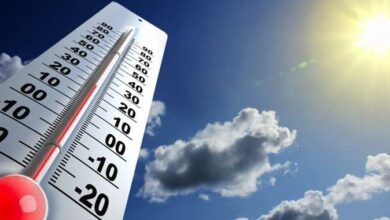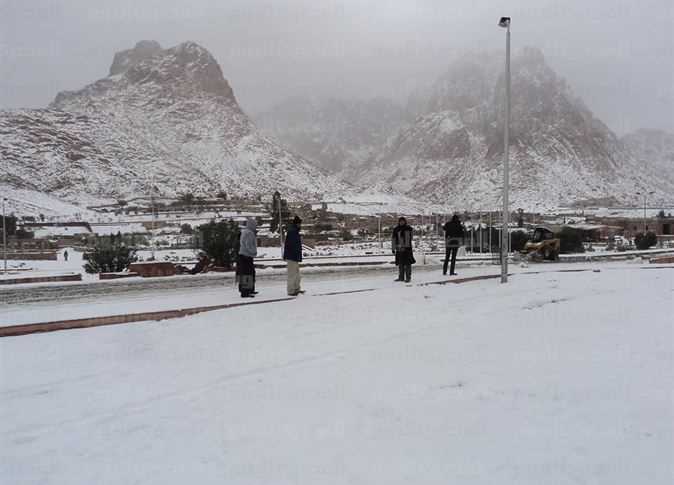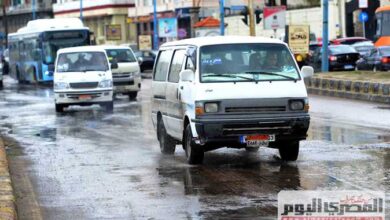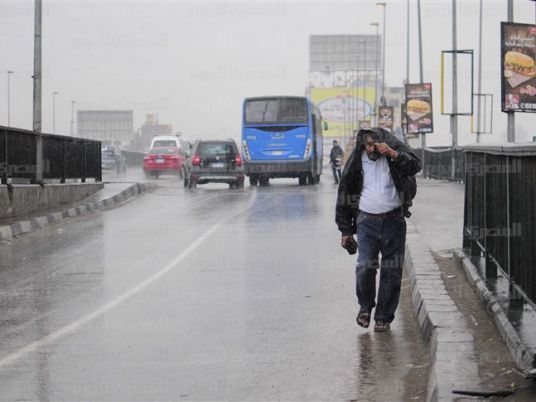
The Egyptian Meteorological Authority expects from Saturday, January 8, to Thursday, January 13, 2022, moderate weather to prevail during the day on Greater Cairo, Lower Egypt and the northern coasts, tending to warm in northern Upper Egypt, South Sinai and southern Upper Egypt.
Very cold temperatures are predicted at night nationwide to reach frost in central Sinai.
Saturday, January 8:
Mist from from 4 am to 8 am is predicted in the morning on some roads leading to and from Greater Cairo, Lower Egypt, the northern coasts, the Suez Canal cities, central Sinai and northern Upper Egypt.
Wind will be active in areas of the far west of the country that may raise sand and dust at intermittent periods. Light rains are expected on areas in the far west and may extend to areas of Lower Egypt and Cairo.
Sunday, January 9:
Active winds are predicted accompanied sand and dust in areas of Greater Cairo, Lower Egypt, the northern coasts and northern Upper Egypt at intermittent periods.
Moderate rain is expected by 40-50 percent on the areas of South Sinai and the northern Red Sea Governorate (Sharm el-Sheikh, Hurghada, Dahab, St. Catherine and Ras Ghareb) at intermittent periods. In addition, light rain is expected by 30 percent in areas of the northern coasts, northern Delta and southern parts of the country at intermittent periods.
Monday, January 10:
Active wind is expected in areas of Greater Cairo, Lower Egypt, the northern coasts and South Sinai at intermittent periods, and light rain at 30 percent on areas of the western coasts, Halayeb, Shalateen and South Sinai at intermittent periods.
Weather forecast for Tuesday, January 11:
Active wind is predicted in areas of Greater Cairo, Lower Egypt and the northwest coasts at intermittent periods.
Weather forecast for Wednesday, January 12:
Active wind is predicted in Greater Cairo, the northern coasts, and South Sinai, intermittently.
Weather forecast for Thursday, January 13:
Active wind is expected on the northern and southern Sinai coasts, intermittently.
Maximum temperatures predicted on Saturday, January 8:
Greater Cairo and Lower Egypt 20C
Northern coasts 20C
South Sinai 24C
Northern Upper Egypt 22C
Southern Upper Egypt 25C
Maximum temperatures predicted on Sunday, January 9:
Greater Cairo and Lower Egypt 17C
Northern coasts 16C
South Sinai 25C
Northern Upper Egypt 17C
Southern Upper Egypt 26C
Maximum temperatures predicted on Monday, January 10
Greater Cairo and Lower Egypt 16C
Northern coasts 16C
South Sinai 21C
Northern Upper Egypt 16C
Southern Upper Egypt 22C
Maximum temperatures predicted on Tuesday, January 11:
Greater Cairo and Lower Egypt 17C
Northern coasts 17C
South Sinai 22C
Northern Upper Egypt 17C
Southern Upper Egypt 22C
Maximum temperatures predicted on Wednesday, January 12:
Greater Cairo and Lower Egypt 17C and Northern coasts 16C
South Sinai 24 C
Northern Upper Egypt 17C
Southern Upper Egypt 22C
Maximum temperatures predicted on Thursday, January 13:
Greater Cairo and Lower Egypt 17C
Northern coasts 16C
South Sinai 24C
Northern Upper Egypt 17C
Southern Upper Egypt 22C
Meteorologists warned of mist, describing it as one of the most dangerous weather phenomena affecting the movement of vehicles on roads and also the flow of air and sea navigation, especially since it prevails these days in many governorates.
The EMA said in a statement that there are six types of mist, including water mist that occurs in the late night hours or in the early morning.
The EMA clarified that there is a difference between mist and fog, although they have the same causes of formation, but the only difference is the level of horizontal visibility.
In the case of fog, the horizontal visibility is less than 1,000 meters, while under water mist horizontal visibility is 1,000 meters or above.
Reasons for the formation of water mist are high humidity levels, relative calm of the wind, low surface temperature, and suspended impurities, dust and smoke in layers close to the surface of the ground.
The authority provided important advice during mist, as follows:
1- Drive with caution.
2- Opening the front and rear headlights.
3- Keeping a distance between each car and the other.
4- If the driver loses the visibility of the road completely while driving, they preferably stop driving and wait on the side of the road while keeping the front and rear headlights open.
Edited translation from Al-Masry Al-Youm




